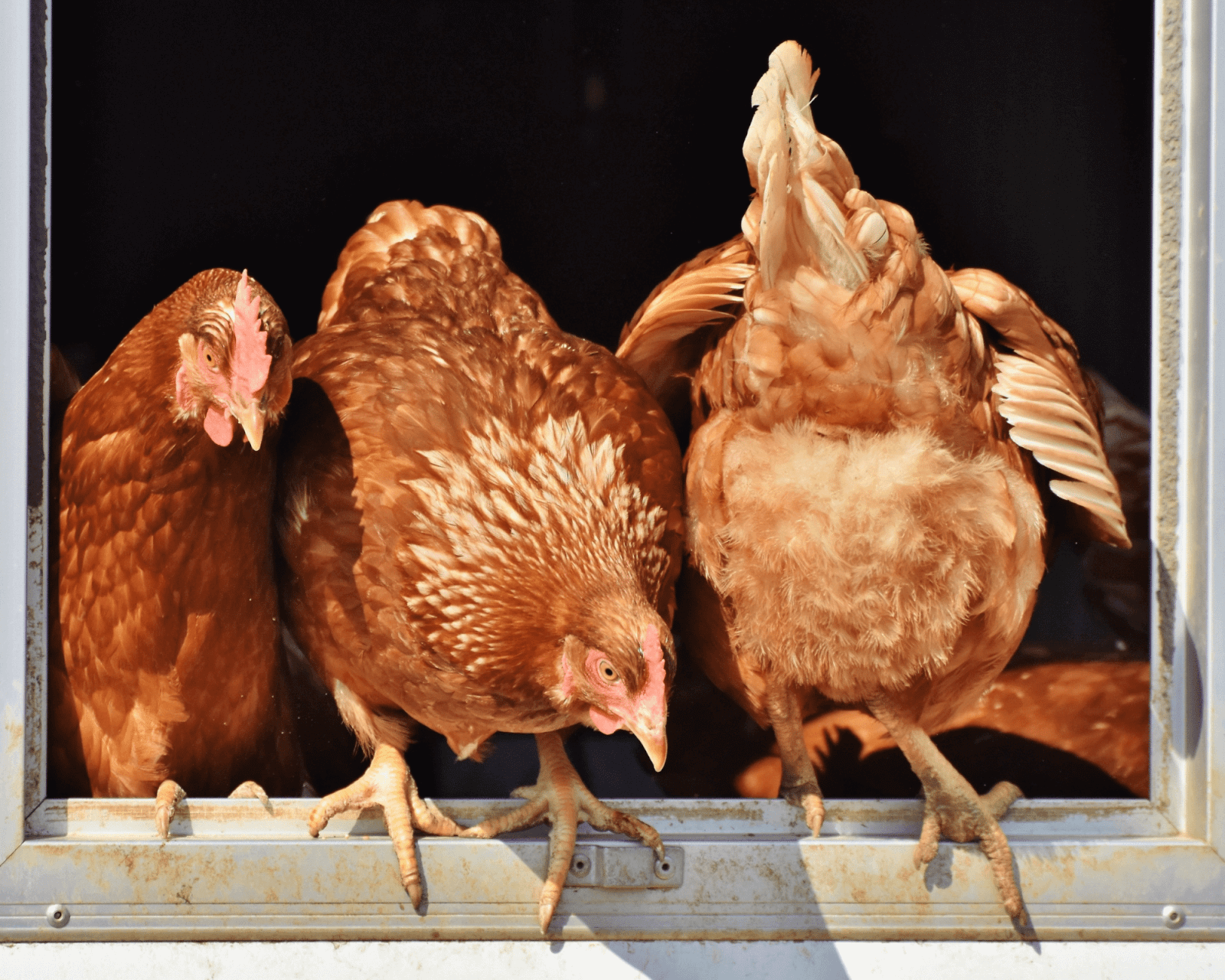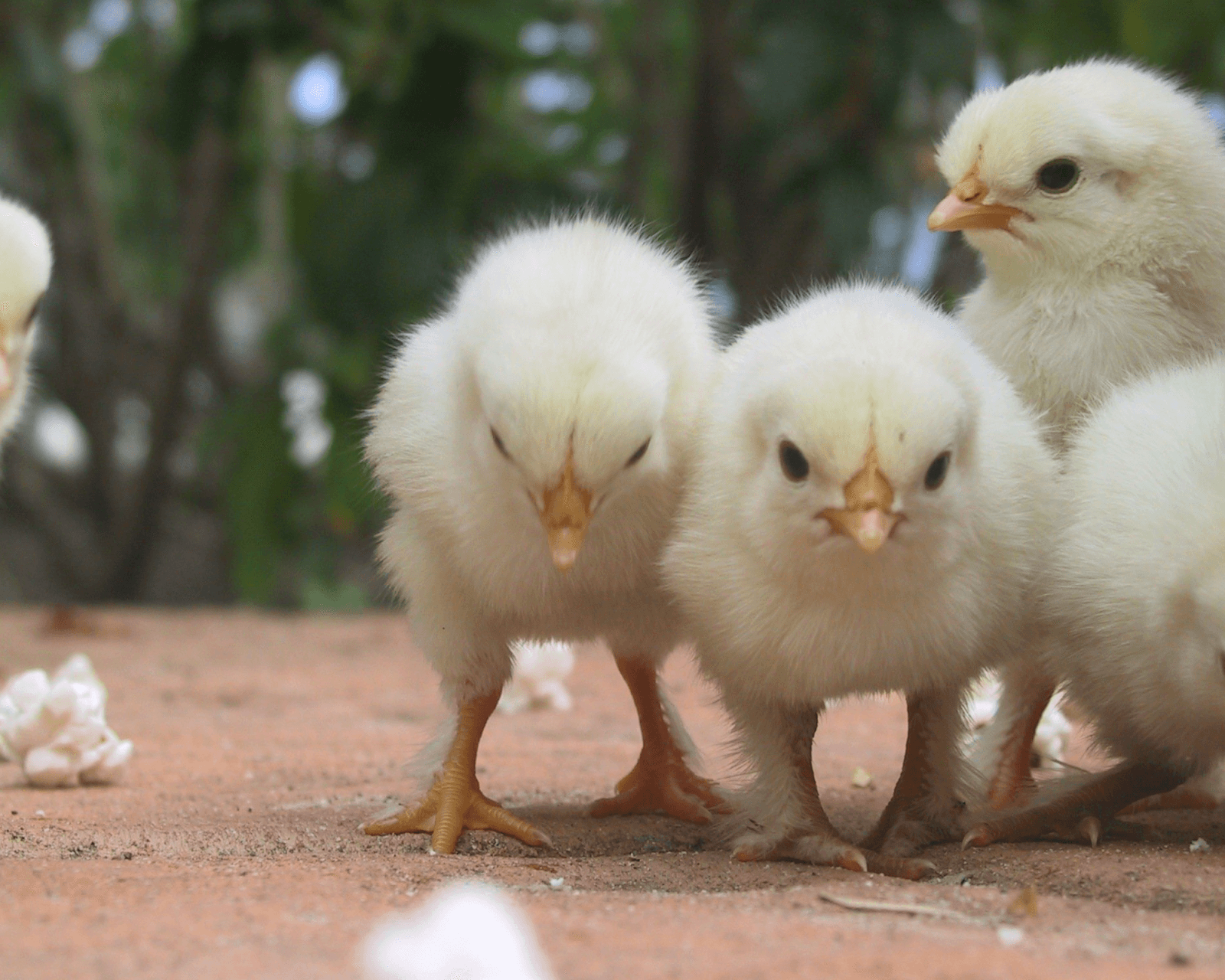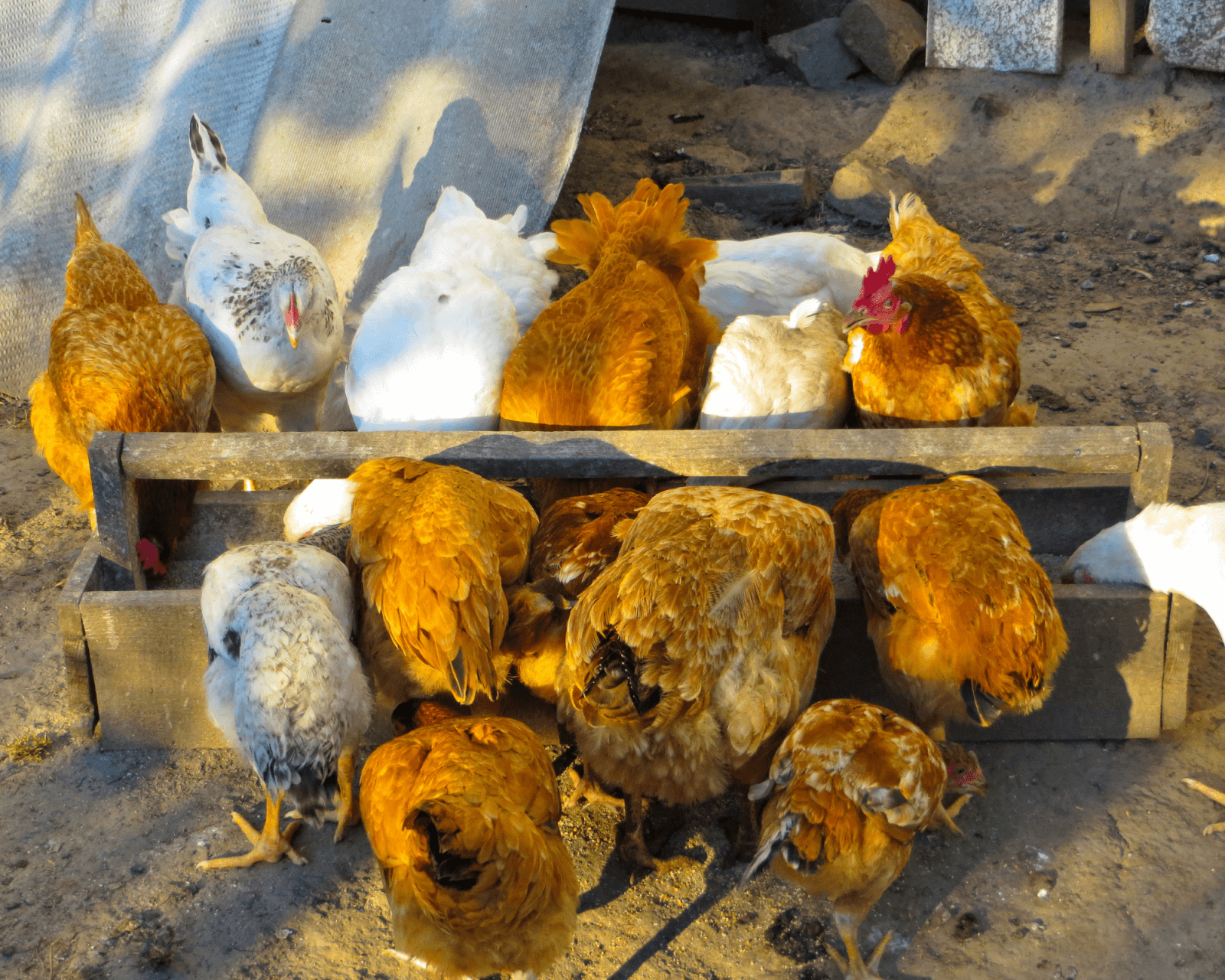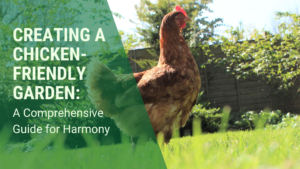Today, we’re diving into a topic every chicken connoisseur will face – the hierarchical world of the feathered society, lovingly referred to as, ‘the pecking order’.
The pecking order is the hierarchy of dominance within a flock, establishing order in chicken society and allowing everyone to coexist peacefully. It’s a natural behaviour that ensures survival and stability for each member of the group—but just like in human politics, you can bet it involves lots of squabbling!
It’s riveting and intricate, it can be highly entertaining to observe. It can, also, present problems for chicken owners who may witness bullying or stress behaviours in their flock as a result.
Hold on to your egg basket, because we’re about to embark on a journey into the world of chicken politics. This is the most comprehensive guide to pecking order you’ll find on Google. We’ve made sure of it!
Table of Contents
Why Do Chickens Have A Pecking Order?

To chickens, pecking order is life. It’s the complex social structure which decides who gets the best perch or the tastiest grub first.
So-called because a bird’s natural behaviour is to peck not only to eat but also to establish dominance, the pecking order decides who’s who in the coop. The top hen rules the roost, and everyone else falls into line beneath her. It’s about:
1. Optimum organisation
Each hen has a role in ensuring the flock survives and thrives.
2. Feathered fortitude
Chickens are prey animals. To have the best chance of survival, everyone needs to coexist peacefully and work together to protect each other.
3. Harmonious Health
A flock that coexists peacefully will be less stressed and therefore healthier. For more poultry health information see our other content 8 Secrets to Raise Happy, Healthy Hens: The Best Way to Prevent Disease in Your Flock and Poultry Health Guide: What to Do When You Have Poorly Poultry.
4. Responsible Resource Allocation
With potentially limited resources, every bird will know where and when they can access food and water and where they can roost to stay safe for the night.

What the Pecking Order Means for Hens
A chicken coop isn’t much dissimilar to a secondary school. It’s a feather-filled observatory of social status. Just like the Queen Bee of Year 11, strutting her stuff through the hallways, there’s always the head hen in every flock. She marches into the canteen first – nabbing the best seats. And you’ll always find her at the back of the bus (the teenage equivalent of the top perch). The others watch in admiration and wonder (with perhaps a little fear or jealousy).
Below the Queen Bee, you have her chosen cronies. They are the ones who get to eat with her and hang out during break time.
Then there’s the rest – the plebs. The misfits who are just here to observe it all going on around them. These are the kids/hens who are lower in the pecking order – and who may not shine in the popularity department but have a charm all of their own.
Just like secondary school kids, pecking order is life. It’s the complex social structure which decides who gets the best perch or the tastiest grub first.
Hen Pecking Order Roles
1. Top Hen – The Alpha

The head of the coop, the boss, the top lady – the Alpha is the dominant hen in the flock. This prestigious position isn’t just about flaunting feathers; the role comes with the responsibility of the safety and order within the flock, finding and allocating food and stopping squabbling among others.
2. Middle Hens – The Betas
Once a head hen is in position, the betas fall into place beneath her. And there’s most often a hierarchy within the hierarchy here – with each hen having a ‘rank’ below the Alpha. The higher the rank, the more hens each beta gets to boss around. Hens with more docile personalities tend to fall towards the bottom – but even the most dominant of betas had better be careful to draw a line between sharing responsibilities and infringing on the Alpha’s bright red comb of authority.
3. The Bottom Hen – The Omega
Sometimes a group, sometimes just the one single hen at the bottom of the pecking order. But this doesn’t mean they/she are to be pitied. The whole point of a well-structured flock is that the Alpha ensures all members have access to resources. For the bottom hen, it may just mean she’ll have to wait for the higher-ranking hens to do their thing. And patience is a virtue, as we all know.
What About Cockerels? Where Do They Fall in the Pecking Order?
Male chickens are at once part of a flock’s pecking order and separate from it. If you have a single cockerel, he will be the ultimate head honcho. However, his presence won’t impact the pecking order amongst the hens – there will still be a top, middle and bottom within the hen pecking order.
The cockerel will have the ultimate say over what the flock does. He will be the ultimate flock guardian, food and water finder, and peacekeeper – as well as checking our roosting and nesting places for his ladies. He also gets to have his way with any of the ladies in his flock.
If there are multiple cockerels, then there will be a pecking order amongst them that’s separate from the hen pecking order. The structure is the same, except cockerels can often fight viciously with each other for dominance and mating rights. That’s testosterone for you.

How the Pecking Order is Established
It’s all about personality. Bottom hens tend to be submissive or passive.
The pecking order begins to establish itself when flocks are formed—regardless of flock size or age. The process will vary a bit depending on specific circumstances though.
Flocks that are raised together from chicks
This is usually the most gradual and peaceful process of establishing a pecking order. Chicks that are the boldest and bravest tend to establish dominance. Chicks will play fight. They start by squaring up to each other but racing away before anything kicks off.
Chicks, like all children, can get a bit rowdy as they approach adolescence, at which point squabbles are to be expected. They’ll begin to make contact with increasing intensity. But this is all part of establishing the pecking order and will usually settle by the time they’re fully feathered out.

Note: When keeping multiple cockerels, it’s best to raise them together from chickhood. This is because they will establish the pecking order early on and be less likely to challenge each other in adulthood – avoiding some gruesome fights for dominance.
Mixed flocks and introducing new birds
New birds introduced to a flock usually start off at the bottom of the pecking order and can work their way up if they’re that way inclined.
Changes to the pecking order
Once pecking order is established it’s usually pretty stable – but sometimes subordinate hens might feel like they can rank up, especially if there’s a death in the flock or a social shift when new hens are added.
Dominance manoeuvres in chickens
Chickens will establish dominance to assert their position in the pecking order in some obvious and some not-so-obvious ways. Pecking and aggression is the quite literal way to establish one’s status as a chicken. They also use subtle dominance tactics to achieve higher rankings, like posturing. They might confront other flock members through wing-flapping, feather puffing, growling, glaring and squawking.
How to Recognise the Pecking Order

Observing your chickens carefully is a brilliant way to understand the flock’s dynamics. Here’s what to look for:
- Who Dines First? The top bird will often eat and drink first. Pay attention to who heads to the feeder without any fuss, who lingers behind, and who gets pushed out of the way. Look at the image above – spot the hens who hang back behind the others. They’re lower in the pecking order.
- Favourite Perches: Dominant chickens often have their preferred perching spots and sleeping locations, typically the highest up. If one hen seems to have a spot that’s exclusively hers, chances are she’s the top hen. Certain hens won’t venture to specific spots that seem to belong to someone else, likelihood is they’re lower in the pecking order.
- Posture Stand-Offs: A bird puffing her chest out or spreading her wings is displaying her high rank. She’s making herself look bigger and more powerful – so everyone knows who’s boss.
Each flock is as unique as the speckles on an egg. In flocks of fewer than 20 birds where new flock members are a rarity, the pecking order is often more stable. In larger flocks there tends to be more competition within the middle hen category. Certain breeds tend to be naturally more docile or assertive, and so pecking order issues can vary within single and mixed-breed flocks. Rescue hens from commercial conditions might also lack a little social awareness and may need some time to learn their place in the flock.
Problems In the Pecking Order and What to Do
Bullying and injuries are the most common problems in a flock. Some very assertive hens can become outright aggressive, throwing their weight around. New, young or lower-ranking hens who fancy a spot a little higher on the perch might also initiate aggressive behaviour in an attempt to move up in the pecking order.

Another issue you may notice is that hens higher up in the hierarchy might guard resources and prevent lower-ranking hens from eating or drinking.
Sometimes a flock can work out its own problems in poultry paradise – and this is often the best way to let things resolve. It’s the hens’ job to keep order and issues should be left to run their natural course wherever possible.
If the pecking order causes injury, severe stress, malnutrition or extreme aggression, that’s when hoomans ought to intervene. After all, we’re here to keep our hens safe – and sometimes they might need a little help.
Main causes of pecking order issues
Pecking order issues are often exacerbated by stress, such as through overcrowding or a lack of social interaction. If you have an aggressive hen who’s being bullied and causing problems for other members of her flock, reduce stress levels immediately. There are other measures you can take to relieve the pressure on the flock’s social system:
- Separate the Offenders: If a bird is being especially peckish, isolate her temporarily. Always isolate the bully hen, not the bullied hen – unless the bullied hen is injured. An injured bird is vulnerable to further injury from the entire flock, who will peck at wounds. This is because they are curious and find the taste of blood rewarding.
- Create Multiple Eating and Drinking Stations: This can help low-ranking birds get their needs met without trouble. Scant resources are a recipe for pecking order disaster. The more abundant the feed and water supply, the more harmony within the flock.
- Use distractions: A hanging cabbage or a pecking block can work wonders in diverting focus from aggression to fun activities. Live BSF larvae, too, are a valuable source of enrichment and have been proven in our scientific study with The University of Reading to reduce stress behaviours like feather pecking and excessive preening in hens.
Where to find more advice about pecking order
You can find another guide to pecking order and how to prevent and solve issues over at The British Hen Welfare Trust. They have splendid resources should you need more advice, and a helpline you can call for information about merging flocks or introducing new rescue hens. Call them on 01884 860084.
Keep calm if you notice what appears to be aggressive behaviours in your flock. Take some time to watch how things unfold. Nature has its way of sorting these things out – and your hens understand the pecking order more than any of us do.
Let them lead the way, and enjoy the curious spectacle of chicken politics as it unfolds before you. Imagine what they must think of our weird social and political customs. Like voting – why not just put all our politicians in a coop together and let them puff their feathers, flap, squawk and peck at each other to win their position in the cabinet? Come to think of it, that sounds pretty familiar…
Be the first to get our guides, blogs and information in your inbox. Sign up to our mailing list – and you’ll also get a code for 10% off your first order with ECOnourish!




